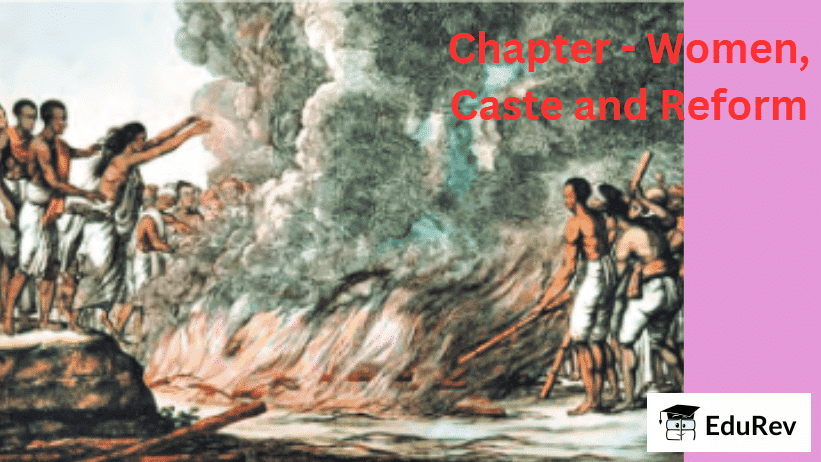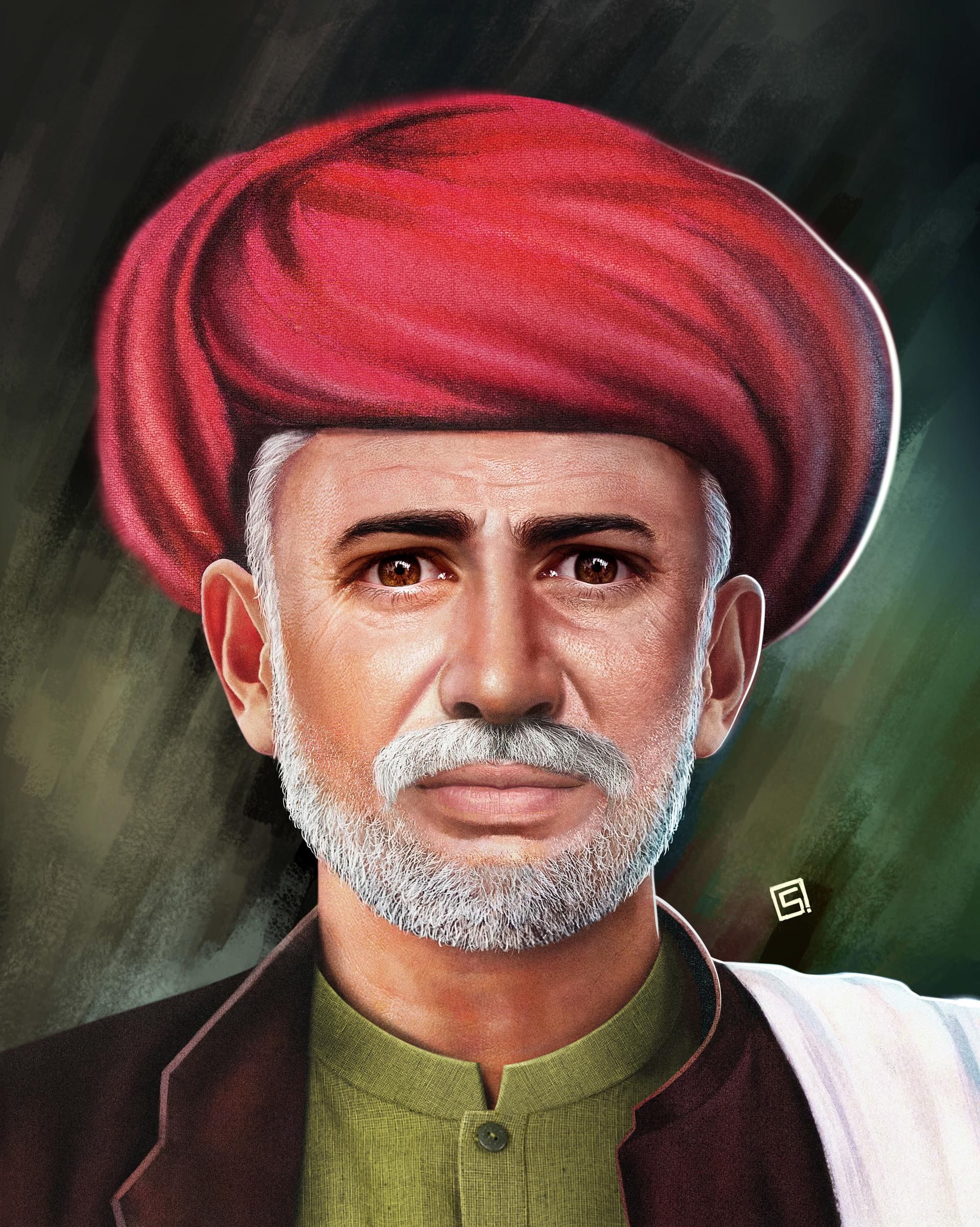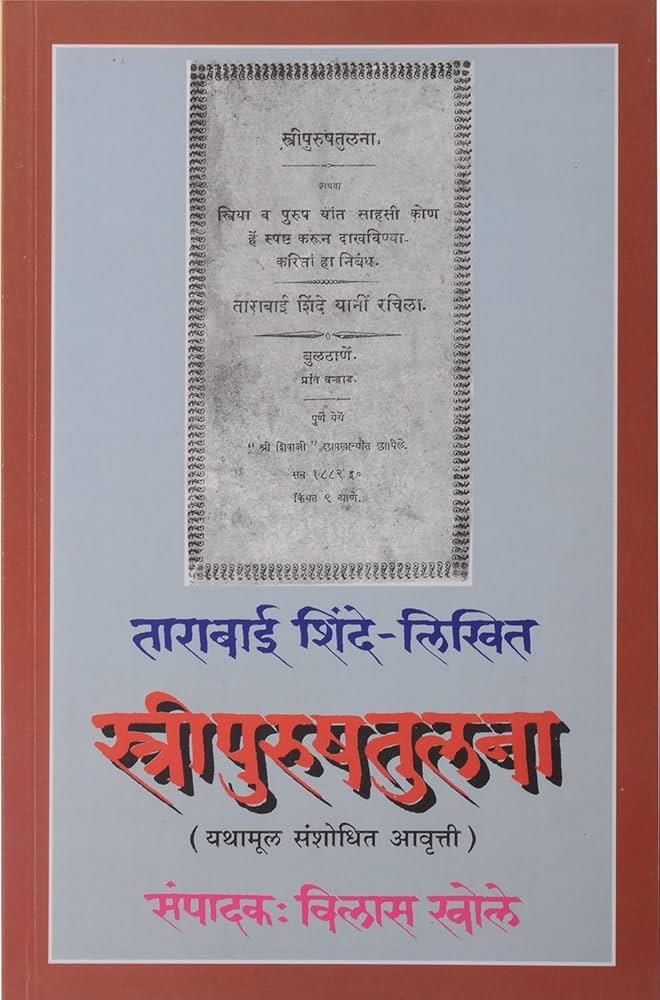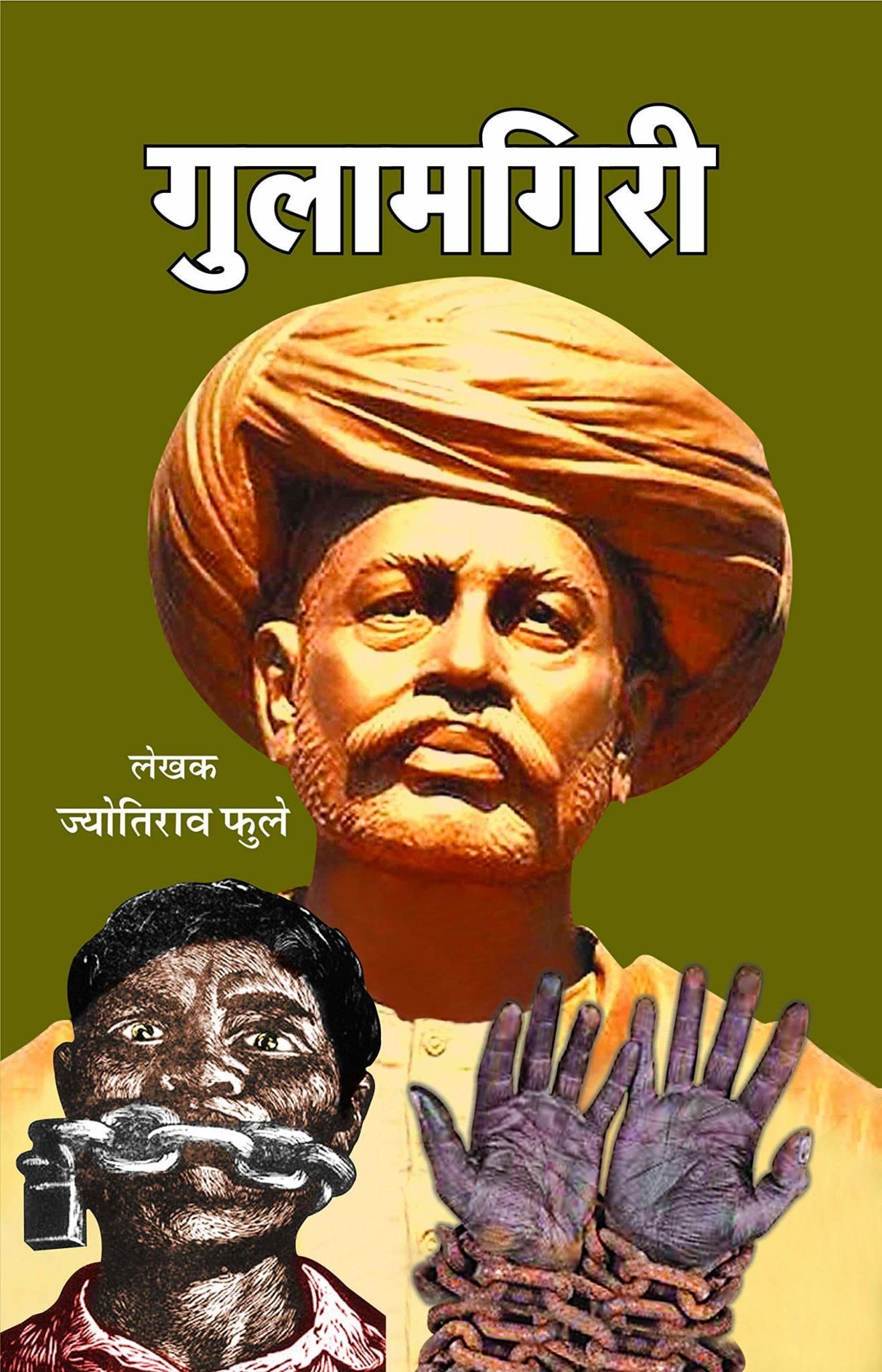Class 8 History Chapter 6 Question Answers - Our Pasts III (Part - II)
| Table of contents |

|
| One Word Answers |

|
| Very Short Answer Questions |

|
| Short Answer Questions |

|
| Long Answer Questions |

|

One Word Answers
Q1: What association did Raja Rammohun Roy found?
Ans: Brahmo Samaj.
Q2: When was sati banned?
Ans: In 1829.
Q3: Who suggested that widows could remarry and influenced British officials?
Ans: Ishwarchandra Vidyasagar.
Q4: Which movement was started by Veerasalingam Pantulu?
Ans: Widow remarriage movement in Telugu-speaking areas.
Q5: Who established schools for girls in Calcutta?
Ans: Vidyasagar.
Q6: Who was the leader of the Dalit movement mentioned in the text?
Ans: Dr. B.R. Ambedkar.
Q7: Which association did Swami Dayanand Saraswati find?
Ans: Arya Samaj.
Q8: Who wrote the book "Gulamgiri"?
Ans: Jyotirao Phule.
Q9: What was the main focus of the Prarthana Samaj?
Ans: Removing caste restrictions and promoting social reforms.
Q10: Which university emerged from the Mohammedan Anglo-Oriental College?
Ans: Aligarh Muslim University.
Very Short Answer Questions
Q1: What was Rammohun Roy’s strategy for challenging harmful practices?
Ans: He used ancient texts to show that practices like sati had no sanction in early traditions and persuaded people to give up these practices.
Q2: How did British officials respond to Rammohun Roy’s campaign against sati?
Ans: They were more than willing to listen to him because many British officials had begun to criticize Indian traditions and customs.
Q3: What role did women play in promoting education in the early twentieth century?
Ans: Women like the Begums of Bhopal and Begum Rokeya Sakhawat Hossain founded schools and promoted girls' education.
Q4: Who criticized Hindu scriptures and founded the Self-Respect Movement?
Ans: E.V. Ramaswamy Naicker, also known as Periyar.
Q5: How did Swami Vivekananda contribute to nationalism in India?
Ans: He spread Vedanta philosophy globally and urged Indians to rise above narrow confines and work for national service and unity.
Q6: What were some of the activities of the Arya Samaj in Punjab?
Ans: The Arya Samaj established schools for girls and supported widow remarriage.
Q7: What did Tarabai Shinde's book "Stripurushtulna" criticize?
Ans: The social differences between men and women.
Q8: How did Jyotirao Phule view the Aryans and the caste system?
Ans: He believed Aryans were foreigners who subjugated the indigenous people and that the land belonged to the so-called low castes.
Q9: What was one of Shri Narayana Guru's famous statements about caste?
Ans: “Oru jati, oru matam, oru daivam manushyanu” (one caste, one religion, one god for humankind).
Q10: What was the main objective of the Singh Sabha movement?
Ans: To rid Sikhism of superstitions and caste distinctions, and promote education among Sikhs.
Short Answer Questions
Q1: Describe the status and roles of women in Indian society two hundred years ago compared to today.
Ans: Two hundred years ago, women had limited rights and were often married off at an early age. They were expected to bear the burden of domestic work and were mostly uneducated. Practices like sati were prevalent, and widows had restricted rights to property. Today, women have legal rights to education, and employment, and can marry by choice. Despite these advancements, access to education and personal freedoms are still limited for many poor and marginalized women.
Q2: Explain the impact of new forms of communication in the early nineteenth century on social reform movements in India.
Ans: The development of printed materials such as books, newspapers, magazines, leaflets, and pamphlets made information more accessible to the general public. This allowed ordinary people to engage in debates and discussions about social, political, economic, and religious issues. Indian reformers used these new platforms to spread their ideas, challenge unjust practices, and link their discussions to broader social movements, thereby facilitating widespread social change.
Q3: Discuss the contributions of Ishwarchandra Vidyasagar to social reforms in India.
Ans: Ishwarchandra Vidyasagar was a key reformer who advocated for widow remarriage by using ancient texts to support his views. He established schools for girls and worked tirelessly to improve the condition of women. His efforts led to the passing of a law permitting widow remarriage in 1856. Despite facing opposition, Vidyasagar's work laid the foundation for further reforms and inspired others to continue the struggle for women's rights.
Q4: Analyze the challenges faced by women reformers in the nineteenth and early twentieth centuries in India.
Ans: Women reformers faced significant opposition from conservative groups who feared that education and new roles for women would corrupt traditional values and family structures. They were often boycotted and criticized for their efforts. Despite these challenges, women like Begum Rokeya Sakhawat Hossain, Pandita Ramabai, and Tarabai Shinde founded schools, wrote critical works, and formed associations to fight for women's rights, making substantial contributions to social reform.
Q5: Evaluate the role of caste reform movements in changing social hierarchies in nineteenth-century India.
Ans: Caste reform movements, led by individuals like Jyotirao Phule and Shri Narayana Guru, challenged the entrenched social hierarchies. These movements promoted the idea of caste equality, criticized Brahmanical dominance, and sought to uplift the lower castes. They established associations, wrote critical texts, and advocated for social justice. Although these movements faced resistance, they succeeded in raising awareness and slowly altering perceptions about caste-based discrimination.
Q6: What strategies did reformers like Raja Rammohun Roy and Ishwarchandra Vidyasagar use to advocate for social change, and how effective were they?
Ans: Reformers like Raja Rammohun Roy and Ishwarchandra Vidyasagar used ancient texts to argue against practices like sati and for widow remarriage. They engaged in public debates, wrote extensively, and persuaded both Indian society and British officials to adopt reforms. Their strategies were effective in creating legal changes, such as the banning of sati and the legalization of widow remarriage, and in promoting the idea that societal practices could be reformed through rational discourse.
Q7: How did the role of education evolve for women from the nineteenth century onwards in India?
Ans: Initially, education for women was met with resistance due to fears of disrupting domestic duties and exposing women to corrupting influences. Over time, reformers like Vidyasagar and organizations like Arya Samaj established schools for girls. By the late nineteenth century, women began entering universities, training as doctors, and becoming teachers. Education became a crucial tool for women to critique societal norms and advocate for their rights, leading to a gradual but significant shift in their social roles.
Q8: Discuss the significance of the book "Gulamgiri" by Jyotirao Phule in the context of social reform in India.
Ans: "Gulamgiri" (Slavery) by Jyotirao Phule was a seminal work that drew parallels between the plight of the lower castes in India and the black slaves in America. It criticized the caste system and argued for the unity of Shudras and Ati Shudras to challenge Brahmanical dominance. The book highlighted the historical injustices faced by the lower castes and called for social equality, making it a critical text in the movement for caste reform and social justice in India.
Q9: Explain the impact of the Self Respect Movement founded by E.V. Ramaswamy Naicker (Periyar) on the caste system and religious practices in South India.
Ans: The Self Respect Movement, founded by Periyar, aimed to dismantle the caste system and promote social equality. Periyar criticized Hindu scriptures and religious practices that upheld caste distinctions and gender inequality. He advocated for rationalism, self-respect, and the rejection of religious authority. The movement empowered lower castes, challenged Brahmanical dominance, and promoted education and self-respect, significantly impacting social dynamics in South India.
Q10: What role did Christian missionaries play in the education and upliftment of lower-caste and tribal children in nineteenth-century India?
Ans: Christian missionaries established schools for lower-caste and tribal children, providing them with education and resources to navigate a changing world. This education allowed these children to escape the oppressive caste system and seek better opportunities in urban areas and new industries. Missionary schools played a crucial role in the early education and social mobility of marginalized communities, contributing to the broader movement for social reform and equality.
Long Answer Questions
Q1: Analyze the role of women reformers in the early twentieth century in India. Discuss their contributions to education, social reform, and political movements, highlighting the works of figures such as Begum Rokeya Sakhawat Hossain, Pandita Ramabai, and Tarabai Shinde.
Ans:
- Women reformers played a crucial role in the early twentieth century in India, contributing significantly to education, social reform, and political movements.
- Begum Rokeya Sakhawat Hossain founded schools for girls and wrote extensively on women's rights, advocating for education and social equality.
- Pandita Ramabai established the Mukti Mission, which provided education and shelter for widows and destitute women, and campaigned for women’s rights and social reforms.
- Tarabai Shinde criticized the patriarchy and gender inequalities in her writings, advocating for the empowerment of women.
- These reformers not only contributed to the improvement of women’s status but also inspired future generations of women to continue the struggle for equality and justice.
Q2: Evaluate the interplay between social reform movements and nationalist movements in India during the late nineteenth and early twentieth centuries. How did social reforms influence nationalist ideologies, and in what ways did nationalist leaders incorporate social reform into their agendas?
Ans:
- The late nineteenth and early twentieth centuries in India witnessed a significant interplay between social reform movements and nationalist movements.
- Social reforms influenced nationalist ideologies by highlighting the need for social justice and equality as essential components of the struggle for independence.
- Nationalist leaders like Mahatma Gandhi incorporated social reforms into their agendas, advocating for the abolition of untouchability and the promotion of women's rights.
- The convergence of social and political goals strengthened the overall movement for independence, as addressing social inequalities became an integral part of the broader struggle against colonial rule.
- Social reformers and nationalist leaders collaborated on various initiatives, creating a unified front against both social injustices and British colonialism.
Q3: Examine the impact of the introduction of print media in the early nineteenth century on the spread of reformist ideas in India. How did newspapers, books, and pamphlets contribute to the social reform movements, and what were the major outcomes of these communications?
Ans:
- The introduction of print media in the early nineteenth century revolutionized the dissemination of information in India.
- Newspapers, books, pamphlets, and magazines became more accessible and affordable, reaching a wider audience than ever before.
- This development played a crucial role in the spread of reformist ideas.
- Reformers like Raja Rammohun Roy and Ishwarchandra Vidyasagar utilized print media to advocate for social changes such as the abolition of sati and promotion of widow remarriage.
- The increased circulation of ideas facilitated debates and discussions on social, political, economic, and religious issues, linking these discussions to broader social movements.
- Print media enabled ordinary people to express their views and participate in the reform process, fostering a more informed and engaged public.

Q4: Evaluate the significance of Raja Rammohun Roy’s contributions to social and educational reforms in India. How did his efforts against sati, promotion of widow remarriage, and advocacy for women's education influence subsequent reform movements and British colonial policies?
Ans:
- Raja Rammohun Roy was a pioneering social reformer whose contributions profoundly impacted Indian society.
- His campaign against the practice of sati led to its abolition in 1829, marking a significant step towards gender equality.
- Rammohun Roy founded the Brahmo Samaj, which sought to reform Hinduism by promoting monotheism and opposing idolatry and social injustices.
- He advocated for women's education and wrote extensively on the need for social reforms.
- Rammohun Roy’s efforts to spread Western education and engagement with British officials helped bridge cultural gaps and foster mutual understanding.
- His strategies, which included using ancient texts to argue against harmful practices, influenced subsequent reform movements and laid the groundwork for future social changes.
Q5: Analyze the development and impact of women’s education in India from the mid-nineteenth century to the early twentieth century. Discuss the roles played by key figures, the establishment of educational institutions, and the societal responses to these changes.
Ans:
- The development of women’s education in India faced significant resistance in the mid-nineteenth century.
- Reformers like Ishwarchandra Vidyasagar and organizations such as Arya Samaj played crucial roles in establishing schools for girls, despite societal fears that education would disrupt traditional roles.
- The gradual acceptance of women’s education led to increased opportunities for women to enter professional fields such as medicine and teaching.
- Women like Rashsundari Debi, who secretly taught herself to read and write, symbolized the desire for education among women.
- The early twentieth century saw further advancements with women like Begum Rokeya Sakhawat Hossain founding schools and advocating for women’s rights.
- Despite ongoing challenges, these efforts significantly improved the status and opportunities for women, contributing to the broader social reform movements in India.
Q6: Discuss the evolution of the Non-Brahman movement in South India, particularly the contributions of leaders like E.V. Ramaswamy Naicker (Periyar). How did this movement challenge the Brahmanical social order and what were its long-term effects on South Indian society and politics?
Ans:
- The Non-Brahman movement in South India emerged as a significant challenge to the Brahmanical social order.
- E.V. Ramaswamy Naicker (Periyar) was a key figure in this movement, advocating for the rights of non-Brahman castes and promoting rationalism and self-respect.
- Periyar criticized Hindu scriptures for perpetuating caste inequalities and called for the rejection of religious authority.
- The Self Respect Movement, founded by Periyar, emphasized the importance of education, social equality, and the eradication of caste distinctions.
- This movement gained momentum as non-Brahman castes, who had acquired education and economic influence, demanded social justice and equality.
- Periyar’s efforts led to increased awareness of caste issues and inspired a broader movement for social reform.
Q7: Examine the role of Christian missionaries in the social reform movements of the nineteenth century in India. How did their efforts in education and social services influence the lower castes and tribal communities, and what was the broader impact on Indian society?
Ans:
- Christian missionaries played a pivotal role in the social reform movements of the nineteenth century in India.
- They established schools for lower-caste and tribal children, providing them with education and opportunities to escape the oppressive caste system.
- Missionary schools offered modern education, including Western science, which helped equip these children to navigate a changing world.
- The missionaries’ efforts in education and social services also included setting up orphanages, hospitals, and other institutions that catered to the needs of marginalized communities.
- These initiatives not only provided immediate relief but also contributed to the long-term upliftment of lower castes and tribal communities.
Q8: Describe the various strategies employed by Indian reformers to challenge and change harmful social practices. How did these strategies vary among different reformers, and what were the successes and limitations of their approaches?
Ans:
- Indian reformers employed various strategies to challenge and change harmful social practices.
- Raja Rammohun Roy used ancient texts to argue against practices like sati and promote social reforms, persuading both Indian society and British officials.
- Ishwarchandra Vidyasagar advocated for widow remarriage by citing ancient texts and established schools for girls to promote education.
- Dr. B.R. Ambedkar led temple entry movements and fought for legal reforms to ensure the rights of Dalits.
- E.V. Ramaswamy Naicker promoted rationalism and self-respect through the Self Respect Movement, challenging religious orthodoxy.
- Despite differing approaches, these reformers shared a common goal of achieving social justice and equality, and their efforts resulted in significant changes in societal attitudes and legal reforms.
|
69 videos|431 docs|46 tests
|
















